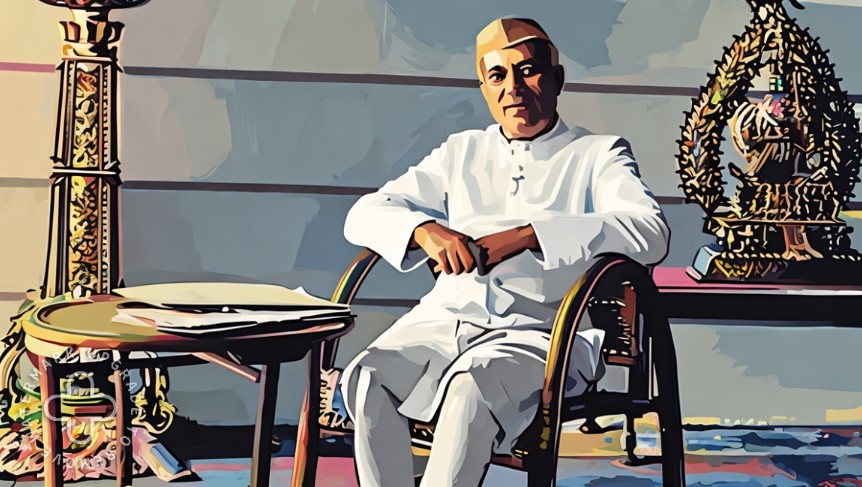| Title | Strategy and Vision in Politics. Jawaharlal Nehru’s policy choices and the designing of political institutions. |
|---|---|
| Author | Dr. Anupma Arya |
| Category | Studies about Jawaharlal Nehru |
| Subject Area | Political Science |
| Number of Pages | 6 |
| ISSN | 2347-1697 |
| Language | English |
| File Size | 438 KB |
| File Type | |
| Country of Publication | India |
| Main Topics | Introduction: Nehru's vision of secularism as the foundation for national unity in multi-religious India, Historical roots of secular outlook in Indian traditions and culture, Nehru's view of communalism as anti-national and secularism as essential for integration. Background and Problem: Critique of past literature on Nehru (from personality cult to condemnation). Research Methodology. Meaning and Evolution of Secularism: Definition: Separation of politics, morals, education, etc., from religious dominance. Nehru’s Model of Secularism: Distinct from anti-religious (e.g., M.N. Roy, Communists) and Gandhi's equal respect approaches. Dharma Nirpekshta: Neutrality and equal treatment toward all religions; promotes harmony as antithesis to communalism. Institutionalization by Nehru: Implicit embedding in Constitution Findings & Conclusion: Relevance in 21st-century challenges (liberalization, globalization). |
Summary Note of this Document
This paper has a look at the way Jawaharlal Nehru handled the issue of secularism as being a necessity for United India in a society with multiple religions. The author using historical methods, and debates from the Constituent Assembly along with references like Frontline magazine, judges past works dealing with Nehru in an excessively positive or negative writing style, and proposes giving him the middle ground under such circumstances as a consequence to the fascist rise after the elections in 2014. The paper is organized into four parts.
Meaning and Evolution of Secularism
During the Renaissance (arguably between the 14th and 16th centuries) secularism was born in Europe, it was a rebirth of reason to the detriment of religion which was the dominating power. The movement gathered strength during the Enlightenment which put emphasis on rationality and scientific temper. Secularism, according to the author, has two different models in the West:
- Liberal: the state has no bias towards religion but this also means that religion and politics are completely separated (religion is a personal matter).
- Marxian: It is an anti-religion stance in which religion is seen as a tool of the bourgeoisie ("opium of the people") used to lull the proletariat struggle class-wise.
Nehru’s Model of Secularism
According to Naren Poona, "Dharma Nirpekshta" (neutrality towards religion) was the term used to describe Nehru's concept which was quite different from the likes of Roy, Bhagat Singh, the Communists, and Gandhi in that it was not an outspokenly anti-religious work but rather one that presented Gandhi's concept of respect for all faiths as a less than ideal option. The point of view of Nehru was that secularism was a legacy of India's past which allowed government interference in religious matters for societal good (e.g., removal of social evils) without giving any particular religion the upper hand. It was almost like a balancing act between India and the rest of the world informing the policy of justice, equality, and the protection of minorities being given priority over leaving it explicitly mentioned in the constitution. Nehru had argued against the proposal for the addition of the term "secular" to the Preamble in the 1948–49 debates on the contrary he claimed that it was already there in the form of principles.
 |
Institutionalization by Nehru
Despite the fact that the term "secular" was not part of the original Constitution (added through the 42nd Amendment in 1976), Nehru had already made it an integral part of the document implicitly by:
- Fundamental Rights: Implying that all citizens are equal, have the freedom of religion, and are allowed through educational/cultural rights to minorities to participate in their community.
- Electoral Reforms: Apart from the abolition of the separate electorates, the introduction of universal adult franchise was the most important reform.
- Governance Structure: With the help of a parliamentary system, the integration of different communities into power-sharing at national/state levels was achieved so that the diversity was respected.
- Political Socialization: Public tours stressing secularism's advantages.
- Congress Party Practices: While ensuring minority representation in government, party, administration, judiciary, and defense, simultaneously Nehru was working on both sides of the fence to alleviate the post-Partition insecurities (e.g., for Muslims).
Nehru successfully secularized India's polity despite a non-secular society but lacked the strength to carry out a robust systematic anti-communal campaign, recklessly relying on industrialization and assuming that with the British gone, communality would come to an end. Sometimes religious demographics were a factor in ticket allotments.
Contemporary Relevance and Threats
The model created by Nehru is still very important in the 21st century times of liberalization, privatization, and globalization. It acts as a safeguard of unity against revivalism, fundamentalism, and fascism. The communal forces who were weakened post-2004/2009 then suffered a revival in 2014 (and subsequent state elections, except Delhi/Bihar) that threatens democracy. In order to counter these amplified threats effectively without mechanical application, the author exhorts the liberals, secularists, and progressives not only to rally and strengthen but also to creatively fashion the Nehru thoughts.
In brief, Nehru's secularism—positive, accommodative, and justice-oriented—was neither totally colonial nor completely post-colonial, but nevertheless, it acted as a pragmatic fence for India's diverse social fabric. The paper exhorts the need for watchfulness in order to maintain this inheritance.
